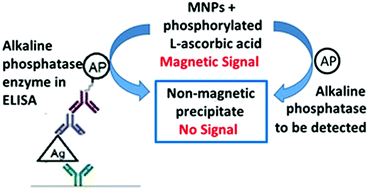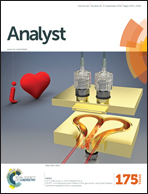Enzymatic conversion of magnetic nanoparticles to a non-magnetic precipitate: a new approach to magnetic sensing
Abstract
Magnetic sensing utilizes the detection of biomolecule-conjugated magnetic nanoparticles (MNPs). Our new strategy offers a novel approach to magnetic sensing where in situ conversion produces a “loss of signal” in the sensing device. This report demonstrates the enzymatic conversion of Fe3O4 MNPs to a non-magnetic precipitate via reduction by L-ascorbic acid generated by the action of alkaline phosphatase.



 Please wait while we load your content...
Please wait while we load your content...